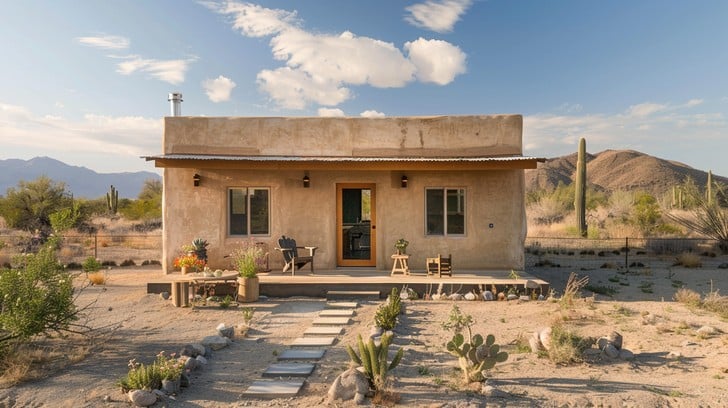Table of Contents
- Introduction to Desert Home-Buying
- Understanding Desert Climates
- Key Considerations for Desert Properties
- The Importance of Energy Efficiency
- Landscaping and Water Conservation
- Choosing the Right Location
- Financing Your Desert Home
- Legal and Regulatory Factors
- Conclusion: Making the Right Choice
Introduction to Desert Home-Buying
Buying a home in a desert climate offers a unique blend of challenges and rewards. These regions, known for their expansive landscapes, tranquil environments, and generally pleasant year-round temperatures, have captured the imagination of many seeking a harmonious blend of serenity and beauty. As urban centers become more congested, the lure of a quieter, more tranquil lifestyle is hard to resist. With numerous homes for sale in Palm Desert, for instance, potential buyers have many options to explore, each with its unique charm and potential.
Transitioning to a desert abode requires more than a simple change of address; it demands a particular mindfulness toward the region’s distinct conditions. New homeowners must consider climate adaptation, resource conservation, and lifestyle changes. Understanding these considerations ensures a smooth journey toward finding the perfect home while effectively managing expectations and challenges concerning desert living.
Understanding Desert Climates
The hallmark of desert climates lies in their extremes. Typically characterized by hot days, cool nights, and meager precipitation, these areas feature a stark beauty that’s both demanding and rewarding. Homeowners new to such environments often must adapt to notable temperature fluctuations and potential water scarcity. Insight into effective climate adaptation strategies provides valuable preparation for informed decisions about prospective properties.
For example, homes with passive cooling can reduce the reliance on air conditioning systems, fostering a more sustainable lifestyle. These features, combined with an understanding of local weather patterns, empower homeowners to enjoy the best the desert climate offers while minimizing discomfort.
Key Considerations for Desert Properties
When searching for a home in the desert, several critical factors must be weighed to ensure comfort and longevity. Many dwellings in these areas have thick walls, shallow roofs, and large windows strategically placed to maximize natural light while minimizing solar gain. Building materials like adobe, known for its insulating properties, are commonly used. Adobe’s ability to maintain cooler indoor temperatures during the day while retaining warmth at night makes it a popular choice in areas with substantial temperature variance.
Beyond construction, prospective homeowners should explore design innovations that emphasize aesthetic appeal and functional efficiency. With the increased awareness of sustainability, many architects are embracing environmentally friendly designs uniquely suited to the rugged desert landscape.
The Importance of Energy Efficiency
Desert climates, marked by intense heat and extended sunlight hours, underscore the importance of energy efficiency in residences. For example, homes equipped with solar panels harness one of the desert’s most plentiful resources: sunlight. Solar energy provides a sustainable power source and significantly reduces electricity bills, offering immense long-term financial savings.
Incorporating energy-efficient appliances and automated systems helps regulate home temperatures and reduces overall energy consumption. Embracing these technologies can substantially improve comfort levels while supporting environmentally friendly living. Such adjustments emphasize that energy-efficient practices are a practical necessity and a conscious lifestyle choice.
Energy-Saving Tips
- Install programmable thermostats, which allow tailored scheduling for heating and cooling based on occupancy patterns.
- Utilize energy-efficient lighting, like LEDs, which consume less electricity and have a longer lifespan than traditional bulbs.
- Regularly maintain HVAC systems to ensure peak performance and prevent energy wastage through inefficiencies.
Landscaping and Water Conservation
Landscaping demands creativity and resourcefulness in desert regions since water is scarce. Utilizing native and drought-resistant plants, such as succulents and cacti, conserves water and enhances the property’s natural beauty. Implementing gray-water systems and drip irrigation can optimize water usage, allowing for lush environments without excessive consumption.
Sustainable practices in water conservation are critical, as they reflect an understanding of the delicate balance required to maintain healthy ecosystems. Proactive measures to minimize water dependence can benefit the environment and the homeowner’s utility expenses, ensuring a mutually beneficial approach to landscaping.
Choosing the Right Location
Choosing a desert location involves thoughtful assessment beyond just the scenic views. Factors such as proximity to basic amenities, availability of healthcare services, and educational institutions significantly impact overall living conditions. A thorough assessment of these elements helps ensure that lifestyle needs align with local offerings.
Moreover, considering community dynamics, safety, and transport connectivity can provide valuable insights into daily life in a potential new neighborhood. Whether seeking isolation from urban sprawl or a connection to a vibrant, close-knit community, understanding these aspects is paramount to a successful home-buying experience.
Financing Your Desert Home
Financing options for desert homes often involve distinctive considerations, given the properties’ unique characteristics and potential for eco-friendly upgrades. Prospective buyers can use financial products designed for energy-efficient homes or properties with renewable energy sources. Such options may offer reduced interest rates or favorable lending terms.
Being mindful of the financing landscape ensures buyers are well-prepared to capitalize on available opportunities. Green mortgages, for instance, encourage sustainable building practices by offering benefits to buyers who meet specific environmental criteria. Conducting comprehensive research into these options can reveal valuable incentives and save money over the life of the loan.
Legal and Regulatory Factors
Understanding local legal and regulatory frameworks is crucial to purchasing a desert home. Zoning laws, environmental regulations, and building codes dictate what alterations can be made to properties and influence future development in the area. Thoroughly researching these factors prevents potential legal issues and supports informed decision-making.
By becoming aware of the implications of these regulations, homeowners can ensure their properties meet all required standards while safeguarding their investments. Local legislation often reflects efforts to manage limited resources effectively, reinforcing the importance of compliance and proactive community engagement.
Conclusion: Making the Right Choice
The prospect of owning a home in a desert climate unveils an array of lifestyle possibilities and rewards. Buyers can confidently approach the decision-making process by considering the various elements of desert living, from climate adaptation to financing options. Emphasizing informed choices and professional consultations, finding the perfect home becomes a rewarding adventure.
Ultimately, whether seeking solitude or community, the desert landscape holds compelling attractions for those ready to embrace its unique challenges and abundant beauty.




